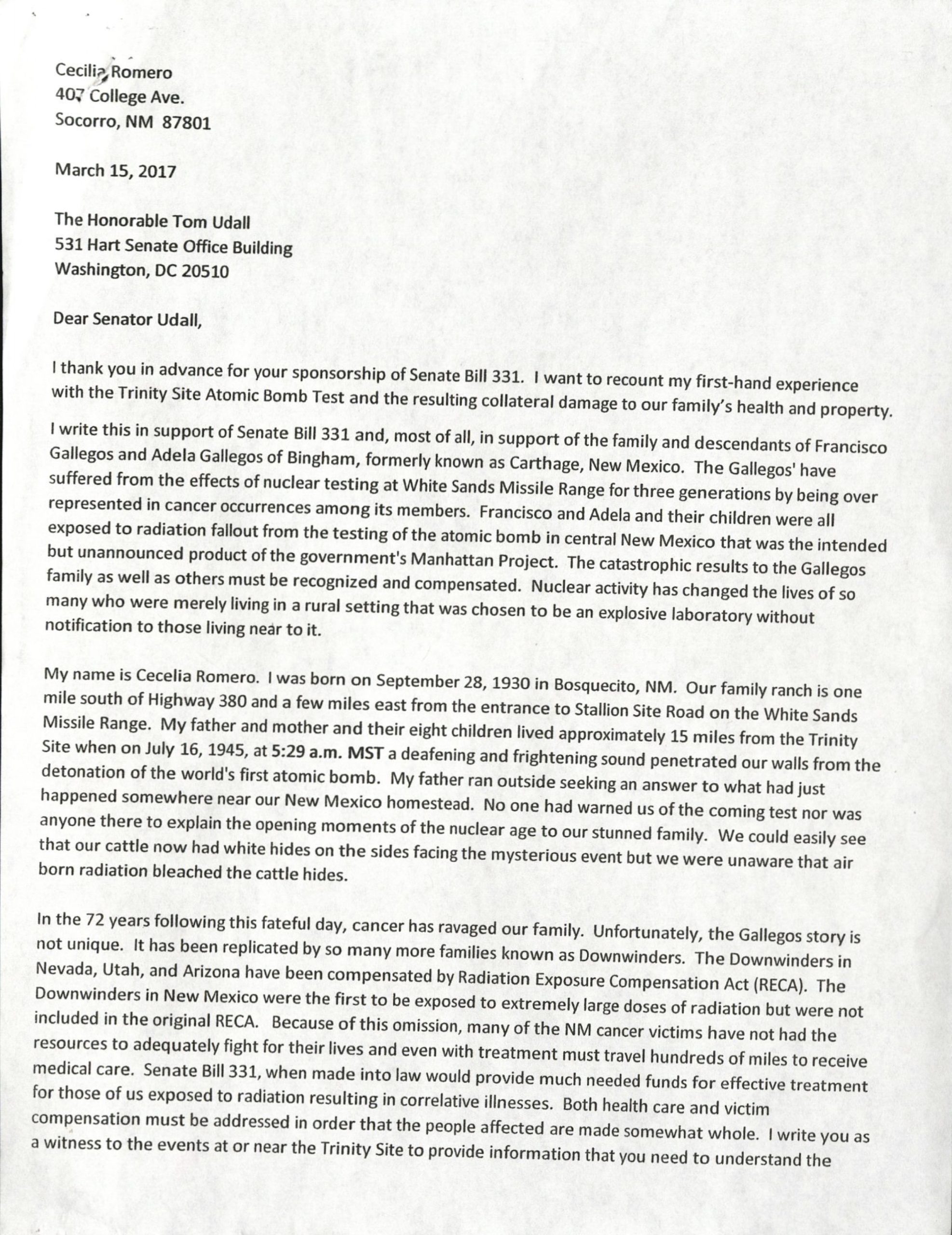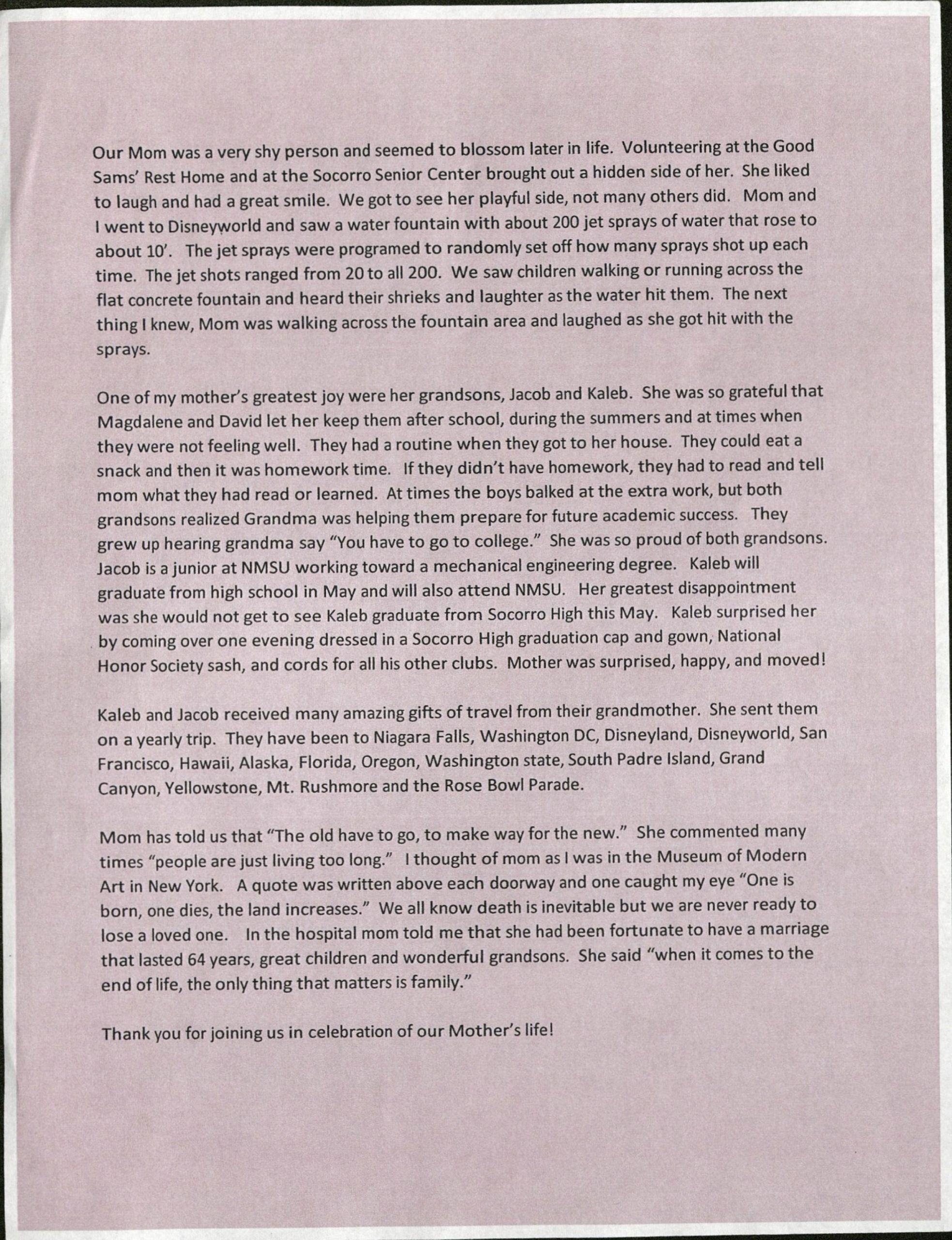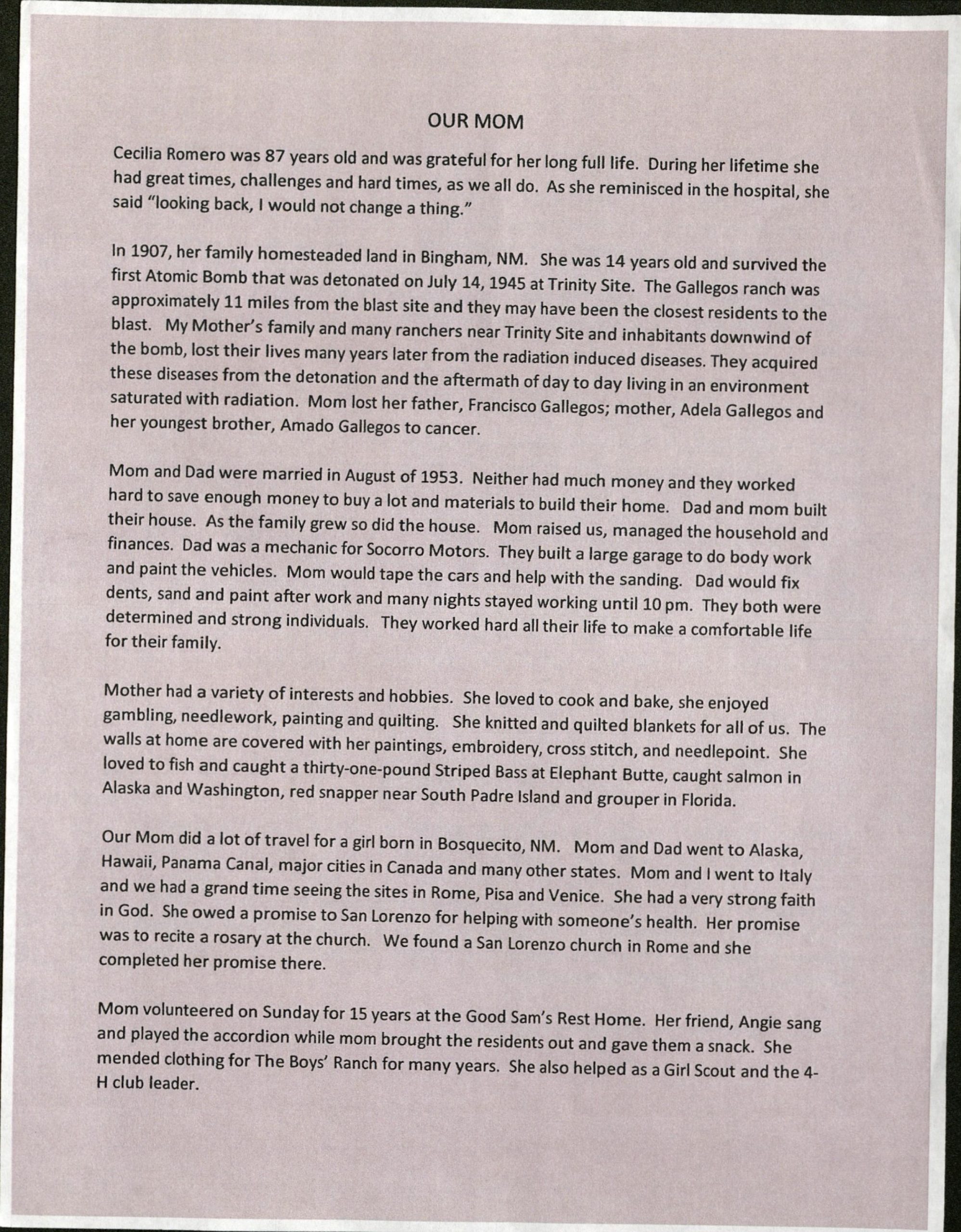It was the early morning of July 16, 1945, when ash unexpectedly fell from the sky, wafting down from the heavens like thick snow. Soot shortly covered everything, from clothing lines to the gardens people depended on for food. Cecilia Gallegos Romero sat on her back porch watching it fall as she and her family drank their morning coffee. They had seen a bright flash just moments before. She was just 14 years old, and wouldn’t learn until years later that she had just witnessed the first detonation of an atomic bomb.
In an effort to keep the test top-secret, the government had not evacuated or informed residents who lived nearby the Trinity Test Site. The Gallegos Ranch was approximately 11 miles from it, making Cecilia’s family some of the closest civilians, and some of the first people to experience the effects of a nuclear bomb.
The cattle on their ranch went completely white on the side that faced the blast: their skin bleached by airborne radiation. Later, the irradiated beef found its way into the marketplace. Afterward, cattle on the Gallegos Ranch were often born with physical deformities or other defects. And cattle weren’t the only ones affected by the test. Water sources, vegetables, and other resources were saturated in radiation. The poor farming communities of New Mexico lived off the land and were now forced to do so in a toxic environment — completely unaware of its lasting impacts on the body.


























